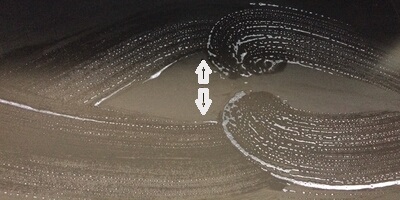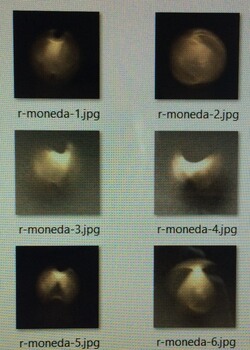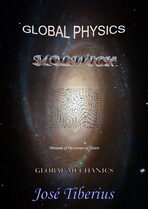4.a) Superposition and quantum entanglement
Nowadays, there are numerous explanations in the scientific literature regarding the phenomena of superposition and quantum entanglement. The idea here is not to repeat Wikipedia, ** but to present a reasonable opinion on what superposition is, and why one hears about instantaneous communication between entangled particles when the only entangled characteristic is the correlation on the ignorance of their states.
It is not very easy to follow academic explanations on this subject, as they mostly skip over the basic ideas and mix complex technical concepts with fanciful terminology –quantum teleportation, decoherence, multiverse interpretation. Any reference to Einstein or the EPR paradox ** helps to accept blindly cattish concepts that are not properly understood.
Finally, in case someone insists on trying to understand those basic concepts, academia presented those concepts as contrary to intuition and formalized with mathematical formulae –Bell inequalities– ** aimed at professionals of theoretical physics and Greek and oriental philosophy.
The fact that the most sensationalist interpretations of quantum entanglement are impossible does not mean that scientific and technological development does not require further investigation of the real characteristics of physical particles. It also should not come as a surprise that particular investigations might not be in detail to the public, considering the past, current, and probable future geopolitical climate of our world.
Confusion around this subject comes from the main characteristic of Quantum Mechanics: Heisenberg’s Uncertainty Principle. This principle makes it necessary to work with probability functions –wave functions– due to both the impossibility of predicting the correct values of quantum properties and issues with measurement. A measurement will, therefore, provide information about a past state, as it will affect its evolution and destroy its temporal coherence.
To explain quantum entanglement, let us stick to the case of electron Spin and use a classic example that can equate the concepts of Spin, superposition, entanglement, and instantaneous communication to their quantum counterparts.
-
Spin
It is relevant to know that Spin is a quantum property that can take two values for the electron, but that we cannot determine its value without altering the physical reality surrounding it. In other words, the measurement of Spin for a specific moment does not provide information regarding its next state, as the measurement itself can change its value. Then, when an electron is created or chosen, its Spin is unknown.
Vibration of the atom
Spin changes when electron flips
The page on the structure of the Global Atom has a brief section describing the Pauli Principle and another on Spin and the orbital angular momentum of electrons. Regardless of whether its value is known or unknown, note that an electron in an atom can be changing its value back and forth, but a free electron seems to be unable to change its Spin, although this is still not known with absolute certainty. The insecurity is because it can only be measured once, and only if it has not changed due to any external factors –quantum decoherence in the case of entanglement.
Our example consists of a coin, spinning on a table so fast that if we were to take a very quick photograph, we would not be able to know in advance what the result would be, whether it would show heads or tails of the coin.
Our probability function is a priori 50% for it to be heads.
Here we have the reasoning behind the famous quote of a cat being both dead and alive at the same time –due to the probability function of the wave. Curiously, what is anti-intuitive is to use the example of dead and alive, since heads and tails or one Spin or another seems perfectly intuitive.
-
Superposition
Another aspect, no less impressive, is the interpretation of the probability functions. As we cannot know whether it will be heads or tails before taking the photo, part of academia says that it is both things at the same time, that it is in two places at once, or that it is in a state of superposition.
Confusing terminology, when one does not know what the actual event is and only knows its probability, the academia says both events occur at the same time –the event and its opposite– despite being exclusionary probabilities.
It is a reverse conceptual metaphor –to treat features of abstract concepts as physical properties of things–, despite being impossible in this case.
In other words, since our eyesight is not good enough to see heads or tails as the coin spins –such as the optical illusion in the image– they then say it is in superposition, even though if they were to take the photo, they would see that this assumption is incorrect. What’s more, no one has ever found a moribund cat.
Superposition
Erroneous assumption
As such, physical reality is not anti-intuitive, but these incorrect assumptions are. It is certainly a crucial error since there is a priori no scientific reasoning that justifies it. There is no excuse to argue that it is, in fact, a superposition of probabilities; this is implicit in the concept of probability itself, and precisely to state that one possibility excludes the other and that the sum of all probabilities is always equal to one. What’s more, they do not say that either; probabilities are not two things at the same time and cannot be in two places at once –they do not have units of time or space. They are abstract concepts unless we start talking about other worlds.
Let us see an additional problem of Quantum Mechanics and its ignorance regarding the real states of things and their causes. If we were to put the photo of the coin inside an envelope without looking at it and send it via standard mail to country B, they would still say it is in superposition, even though there is only one photograph in the envelope and no trapped cat or spinning coin. The corresponding quantum example to the envelope would be a free electron, since –as we have seen previously– the Spin of these electrons does not change its value except in the case of quantum decoherence.
-
Entanglement
Now let us imagine that a camera, synchronized with the rotational speed of the coin, takes two photographs in such a way that if the first photo is heads the second will be tails. If we were to put the photos in two different envelopes (without looking) and send them to country B and country C respectively, the photos would be entangled, since we know that if one is heads, the other will be tails and vice-versa.
In Quantum Mechanics, on occasion, two electrons will have opposite Spin values; in this case, we have additional information on one electron simply from it being part of a two-particle system. It is a game of conditional probabilities; if we know that one has Spin ½, then we could infer the other has Spin -½. In this case, we refer to entangled particles.
Without taking into account the possibility of quantum decoherence, it would be logical to assume that as long as we do not open the envelopes, there is no additional information; but at the exact moment we open one, we will know the content of both envelopes. We can reason similarly with the Spin values of both electrons.
From a probability function, superposition of entangled particle functions means the probability function of the system includes further information on its particles due to their mutual interdependence.
There are experimental proves of entanglement, and there is no problem with it as long as one does not try to extend this concept to the subsequent instantaneous communication between separated particles, as there is no experimental confirmation of the communication.
-
Instantaneous communication
If we were to open the entangled envelope in country B and it contained a photo of the “heads” of the coin, we would immediately know that the envelope in country C contains a photo of the “tails.” However, this does not mean that the postman ran fast to put the photo of tails in the envelope in country C, just that it was already in the envelope since the beginning.
One should be careful with this quantum terminology –the phenomenon of immediate knowledge about the content of the envelope in country C is the instantaneous collapse of the wavefunction. In other words, as there is no longer uncertainty regarding its content, the wave function –probability function– is said to have collapsed, in a clear paradoxical mimicry of the real collapse of a mechanical wave.
The instantaneous communication between envelopes or particles does not exist; at least not until there is an experimental prove without the use of trapped cats. It is not enough proving the final state; one needs to prove the communication at the final state.
Another example is the creation of two entangled photons in electron-positron annihilation. In this case, the right-handed and left-handed photons are entangled photons since their creation due to the nature of the particles that produce them. Moreover, once created do not change their spin –except in the case of quantum decoherence– and will not communicate despite being entangled.
Concerning the instantaneous communication of information, this also does not exist; the information obtained in country B must go to country C so that the latter knows the content of its envelope without needing to open it. Of course, conditional information with pre-established codes may have effects, but this is equivalent to any classical system with the same characteristics.
-
No application of the uncertainty principle
It seems evident that knowing the content of an envelope without opening does not imply a paradox of any kind. It is an exception to Heisenberg’s uncertainty principle, an example of how to overcome it, as this knowledge does not impose any limitation regarding the envelope state, open or closed. In other words, in Quantum Mechanics, no measurement has occurred.
